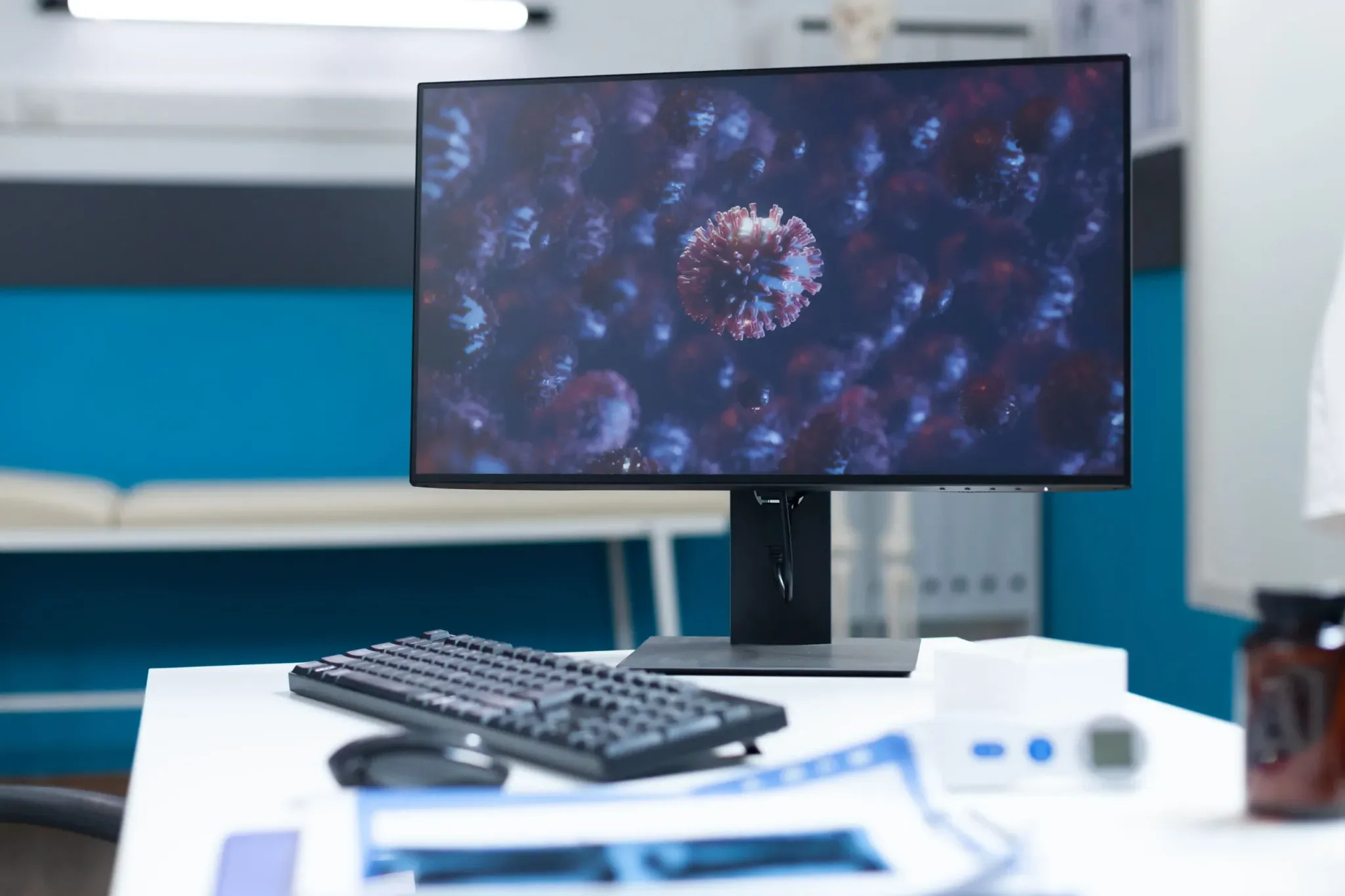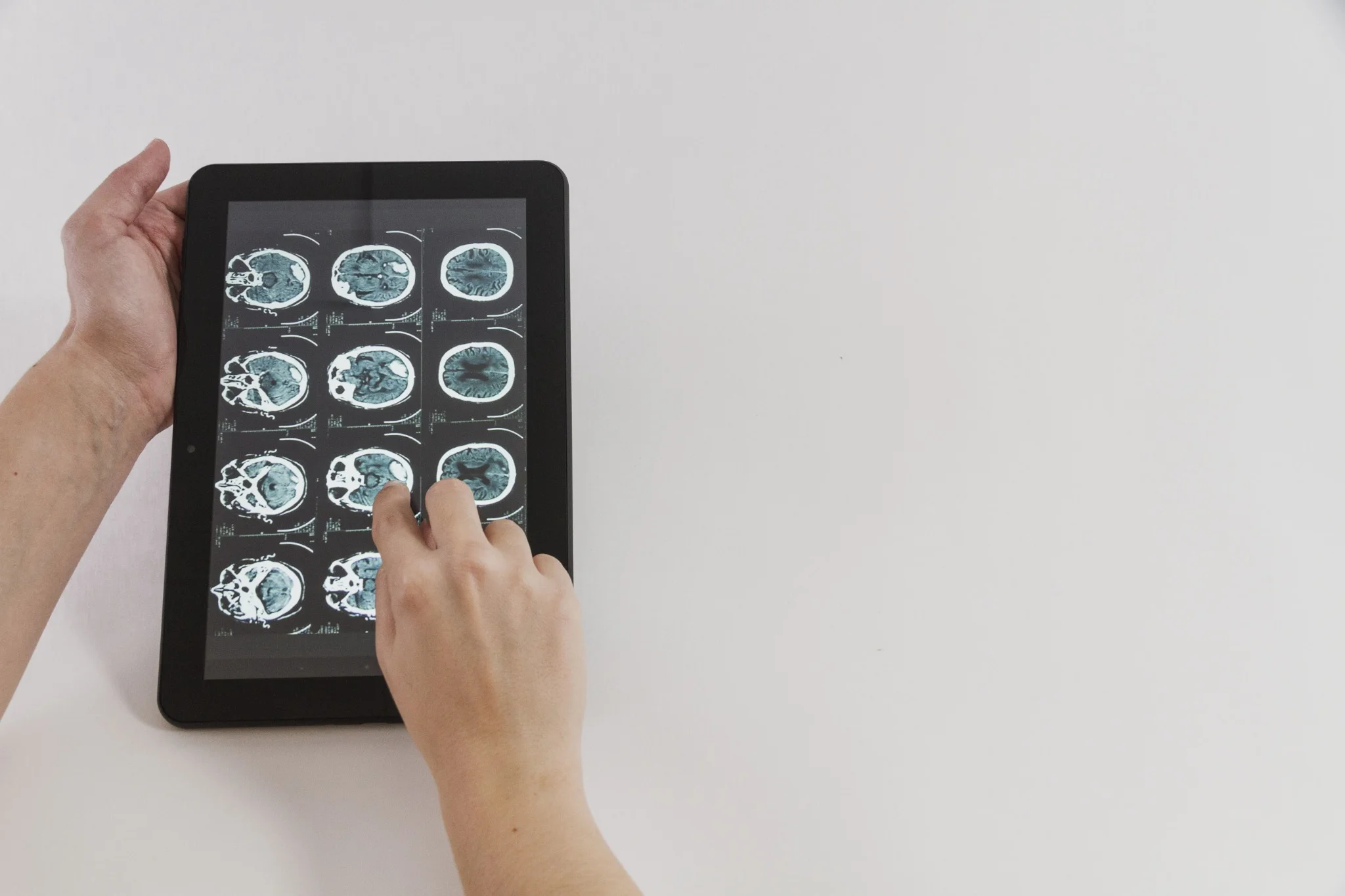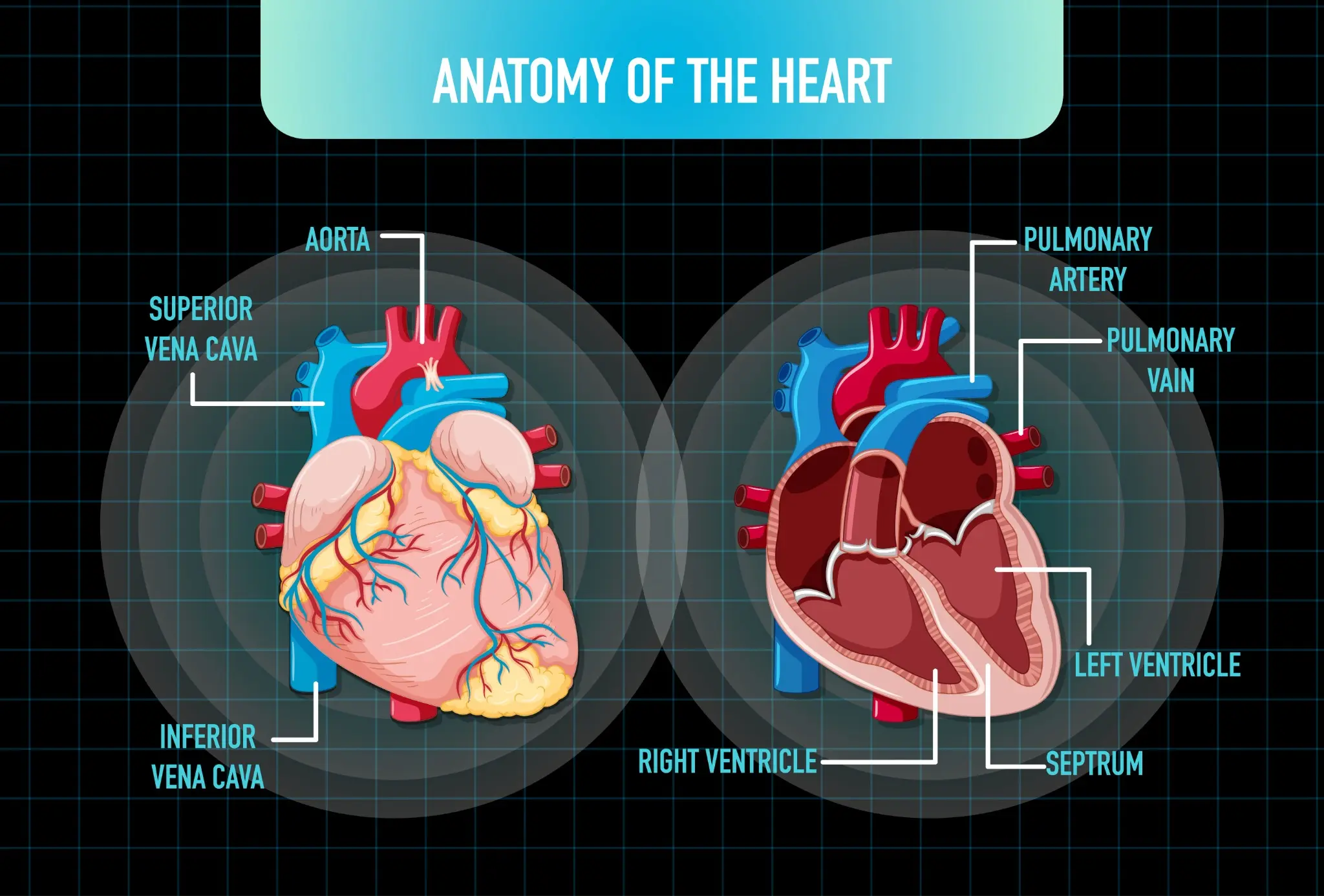ALK (D5F3) IHC reflex to FISH for NSCLC
ALK (D5F3) Reflex FISH Overview
ALK is a protein that is normally found in low levels in many different tissues. However, in some types of cancer, ALK is rearranged and produced at high levels. This can lead to the uncontrolled growth of cancer cells. The ALK (D5F3) IHC (immunohistochemistry) test is most commonly used to diagnose non-small cell lung cancer (NSCLC). NSCLC is the most common type of lung cancer, and about 5% of NSCLC cases have ALK rearrangements. The ALK (D5F3) IHC test can also be used to diagnose other types of cancer, such as lymphoma and inflammatory myofibroblastic tumor.
The ALK (D5F3) Reflex FISH test is a comprehensive diagnostic procedure that combines immunohistochemistry (IHC) and fluorescence in situ hybridization (FISH) to accurately detect the presence of anaplastic lymphoma kinase (ALK) gene rearrangements in solid tumours, particularly in non-small cell lung cancer (NSCLC). This test is crucial for identifying patients who may benefit from targeted therapy with ALK tyrosine kinase inhibitors (TKIs).
The initial step involves using the D5F3 antibody in an IHC assay to detect ALK protein expression in tumour cells. If the IHC results are equivocal or positive, a FISH test is performed to confirm the presence of ALK gene rearrangements. This dual approach ensures a high level of accuracy in identifying patients with ALK-positive tumours, enabling healthcare providers to make informed decisions regarding personalised treatment plans.
Reasons for Undergoing the ALK (D5F3) Reflex FISH
There are several key reasons why your doctor may recommend undergoing the ALK (D5F3) Reflex FISH test:
- Identification of ALK Gene Rearrangements: The test determines if your tumour has ALK gene rearrangements, which can guide the use of ALK TKIs as a targeted treatment option.
- Diagnosis and Staging: ALK testing is recommended for all cases of NSCLC adenocarcinoma, regardless of the stage, to ensure accurate diagnosis and staging.
- Therapeutic Decision-Making: Presence of ALK rearrangements can significantly influence the choice of therapy, making this test essential for developing personalised treatment plans.
List of Parameters Considered During the ALK (D5F3) Reflex FISH
The ALK (D5F3) Reflex FISH test measures the following parameters to provide a comprehensive assessment of ALK gene rearrangements in your tumour:
- ALK Protein Expression by IHC: This step involves detecting the presence and level of ALK protein in tumour cells using the D5F3 antibody. Strong granular cytoplasmic staining indicates ALK positivity and the results can be categorised as positive, negative, or equivocal based on the intensity and distribution of staining.
- ALK Gene Rearrangement by FISH: FISH uses dual-color break-apart probes to detect the separation of the 3' and 5' ends of the ALK gene, indicating a gene rearrangement. At least 50 assessable cells are evaluated, and a minimum of 50% of these cells must show non-fused ALK genes to be considered positive.
ALK (D5F3) Reflex FISH Preparation
Preparing for the ALK (D5F3) Reflex FISH test involves the following steps:
- Specimen Collection: Tumour tissue, typically obtained through a biopsy or surgical resection, is required for the test. The tissue must be formalin-fixed (10% neutral buffered formalin) and paraffin-embedded (FFPE).
- Slide Preparation: Unstained slides (4-micron thick sections) or paraffin blocks are prepared. For IHC, three sections are typically used: one for hematoxylin and eosin (H&E) staining, one for the ALK IHC assay, and one for negative reagent control.
- Transportation: Specimens should be transported at room temperature or refrigerated, especially during the summer months, to ensure their integrity.
- Pathology Report: A surgical pathology report must be included with the specimen submission to provide essential clinical information.
ALK (D5F3) Reflex FISH Results & Interpretation
The results of the ALK (D5F3) Reflex FISH test are interpreted as follows:
- IHC Results: A positive result indicates strong granular cytoplasmic staining in tumour cells, while a negative result shows no significant staining. Equivocal results, characterised by weak or moderate cytoplasmic staining, require further confirmation by FISH.
- FISH Results: A positive FISH result is defined as at least 50% of the evaluated cells showing non-fused ALK genes, indicated by separated 3' and 5' probes. A negative result occurs when less than 50% of the cells show non-fused ALK genes.
- Combined Interpretation: If IHC is positive or equivocal and FISH confirms gene rearrangement, the patient is considered ALK-positive. Discordant results between IHC and FISH may require further evaluation and consultation with a pathologist.
Home Collection for ALK (D5F3) Reflex FISH
Metropolis Healthcare provides a home visit service for the ALK (D5F3) Reflex FISH test. This convenient option allows patients to have samples collected from the comfort of their own homes. Trained phlebotomists from Metropolis Healthcare ensure that the samples are handled with the utmost care and safety, adhering to the highest standards of accuracy.
Choosing this service guarantees timely and reliable results, demonstrating Metropolis Healthcare's commitment to accessible and high-quality healthcare solutions.
ALK (D5F3) IHC reflex to FISH for NSCLC Price
Metropolis Healthcare is a leading diagnostics centre and pathology lab in India equipped with the latest state-of-the-art technologies that provides the ALK (D5F3) IHC reflex to FISH for NSCLC with a clear pricing structure.
The ALK (D5F3) IHC reflex to FISH for NSCLC Price in Mumbai is ₹ 6,360 .
We are committed to deliver accurate and quality results from the best labs in India with complete transparency regarding test cost and turnaround time. No matter where you are, we strive to offer patients high-quality service that is affordable and accessible.
Frequently Asked Questions
The ALK (D5F3) immunohistochemistry (IHC) test is a laboratory procedure that uses an antibody called D5F3 to detect the presence of anaplastic lymphoma kinase (ALK) protein in tissue samples. FISH (Fluorescence in situ hybridization) test will be performed if IHC is positive.
- To diagnose non-small cell lung cancer (NSCLC): ALK rearrangements are found in about 5% of NSCLC cases. The ALK (D5F3) IHC test can help to diagnose NSCLC and determine if it is ALK-positive or ALK-negative.
- To guide treatment decisions: ALK-positive NSCLC is often more sensitive to certain types of targeted therapy than ALK-negative NSCLC. The ALK (D5F3) IHC test can help to determine if a patient is eligible for targeted therapy.
- To monitor treatment response: The ALK (D5F3) IHC test can be used to monitor the response to targeted therapy. If the test results become negative after treatment, it may mean that the treatment is working.
- To diagnose other types of cancer: The ALK (D5F3) IHC test can also be used to diagnose other types of cancer, such as lymphoma and inflammatory myofibroblastic tumor.
- To identify individuals at risk of developing cancer: In some cases, the ALK (D5F3) IHC test may be used to identify individuals who are at high risk of developing cancer, such as those with a family history of ALK-positive cancer.
The ALK (D5F3) IHC test may be recommended for people who have symptoms of NSCLC or other types of cancer that are known to be associated with ALK rearrangements. The test may also be recommended for people who are at high risk of developing one of these types of cancer.
Abnormal results may indicate the presence of ALK gene rearrangements, which can help guide treatment decisions for NSCLC patients. However, abnormal results do not confirm a diagnosis and should be discussed with your doctor for proper interpretation and further evaluation.
A small sample of tissue is removed from the patient and sent to a laboratory for testing. The tissue sample is then stained with the D5F3 antibody. If ALK protein is present in the tissue sample, it will bind to the antibody and turn a brown color. The stained tissue sample is then examined under a microscope to see if there are any ALK-positive cells present. If IHC is positive, FISH test is performed.
- Ensure that you provide paraffin blocks of your tumour sample along with relevant clinical and radiological details.
- No additional preparations, such as fasting or dietary restrictions, are usually required.
- Please reach out to your healthcare provider for any specific instructions or requirements.
- EGFR mutation analysis: Determines mutations in the epidermal growth factor receptor gene
- PD-L1 testing: Assesses PD-L1 protein expression in NSCLC tumour cells
- Next-generation sequencing (NGS): Identifies multiple genetic alterations associated with NSCLC
- ALK IHC testing
- ALK FISH testing
NSCLC stands for non-small cell lung cancer, which is the most common type of lung cancer. It refers to a group of lung cancers that are not small cell carcinomas.
ALK (D5F3) Reflex FISH is a diagnostic test that combines immunohistochemistry (IHC) and fluorescence in situ hybridization (FISH) to detect ALK gene rearrangements in solid tumours, particularly in non-small cell lung cancer (NSCLC). It guides targeted therapy decisions for personalised treatment plans.
Yes, home sample collection is available for the ALK (D5F3) Reflex FISH test. This service allows patients to have samples collected at home by trained phlebotomists who ensure accuracy and safety, providing timely and reliable results.
There are no "normal" levels for ALK (D5F3) Reflex FISH. The results are categorised as positive, negative, or equivocal based on the presence and extent of ALK protein expression and gene rearrangement detected by the test.
The ALK (D5F3) Reflex FISH test is used to identify ALK gene rearrangements in patients with NSCLC. The results guide the use of targeted therapies such as ALK tyrosine kinase inhibitors (TKIs) for personalised treatment.
Testing is typically done once at the initial diagnosis of NSCLC or when there is a suspicion of ALK rearrangement based on clinical or pathological findings. Repeat testing may be considered if the disease progresses or the treatment response changes.
The timing of the ALK (D5F3) Reflex FISH test is determined by the need for diagnostic information to guide treatment decisions. It is usually performed at the time of initial diagnosis or when considering a change in treatment strategy.
No, fasting is not required for the ALK (D5F3) Reflex FISH test. It involves analysing tumour tissue samples rather than blood or other bodily fluids, so dietary restrictions are not necessary.
Ensure that the tissue sample is properly fixed and processed according to the laboratory's guidelines. Include the necessary pathology reports and follow the transportation instructions provided by the laboratory to maintain sample integrity and avoid delays in testing.
The ALK (D5F3) Reflex FISH test measures ALK protein expression by IHC and ALK gene rearrangement by FISH. IHC results are categorised as positive, negative, or equivocal, while FISH results are positive if ≥50% of cells show non-fused ALK genes.
ALK (D5F3) Reflex FISH should be done at the time of initial diagnosis of NSCLC, especially for adenocarcinoma cases, regardless of stage. It may also be performed when considering targeted therapy or if there is a suspicion of ALK rearrangement.
The turnaround time for ALK (D5F3) Reflex FISH results can vary depending on the laboratory and the complexity of the case. Typically, it takes 5-10 working days from the time the sample is received by the laboratory.
The reports for ALK (D5F3) Reflex FISH are usually available within a week depending on the day/time the sample was collected and processed by the lab.
Ratings & Reviews (0)
Why Metropolis?
Metropolis has a team of 200 senior pathologists and over 2000 technicians delivering diagnostic solutions in the areas of routine, semi specialty and super specialty domains like Oncology, Neurology, Gynaecology, Nephrology and many more.
We offer a comprehensive range of 4000+ clinical laboratory tests and profiles, which are used for prediction, early detection, diagnostic screening, confirmation and/or monitoring of the disease.




















 WhatsApp
WhatsApp